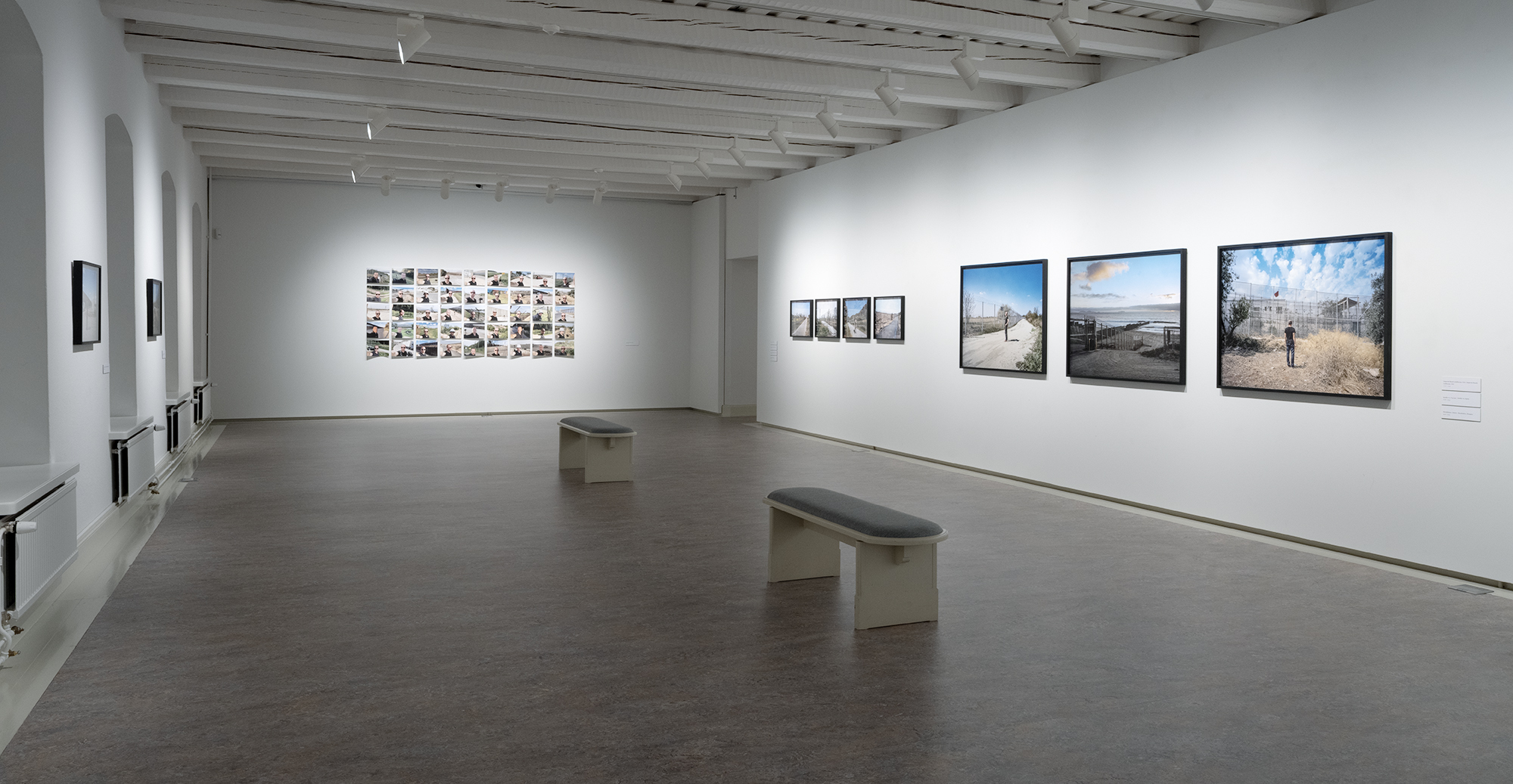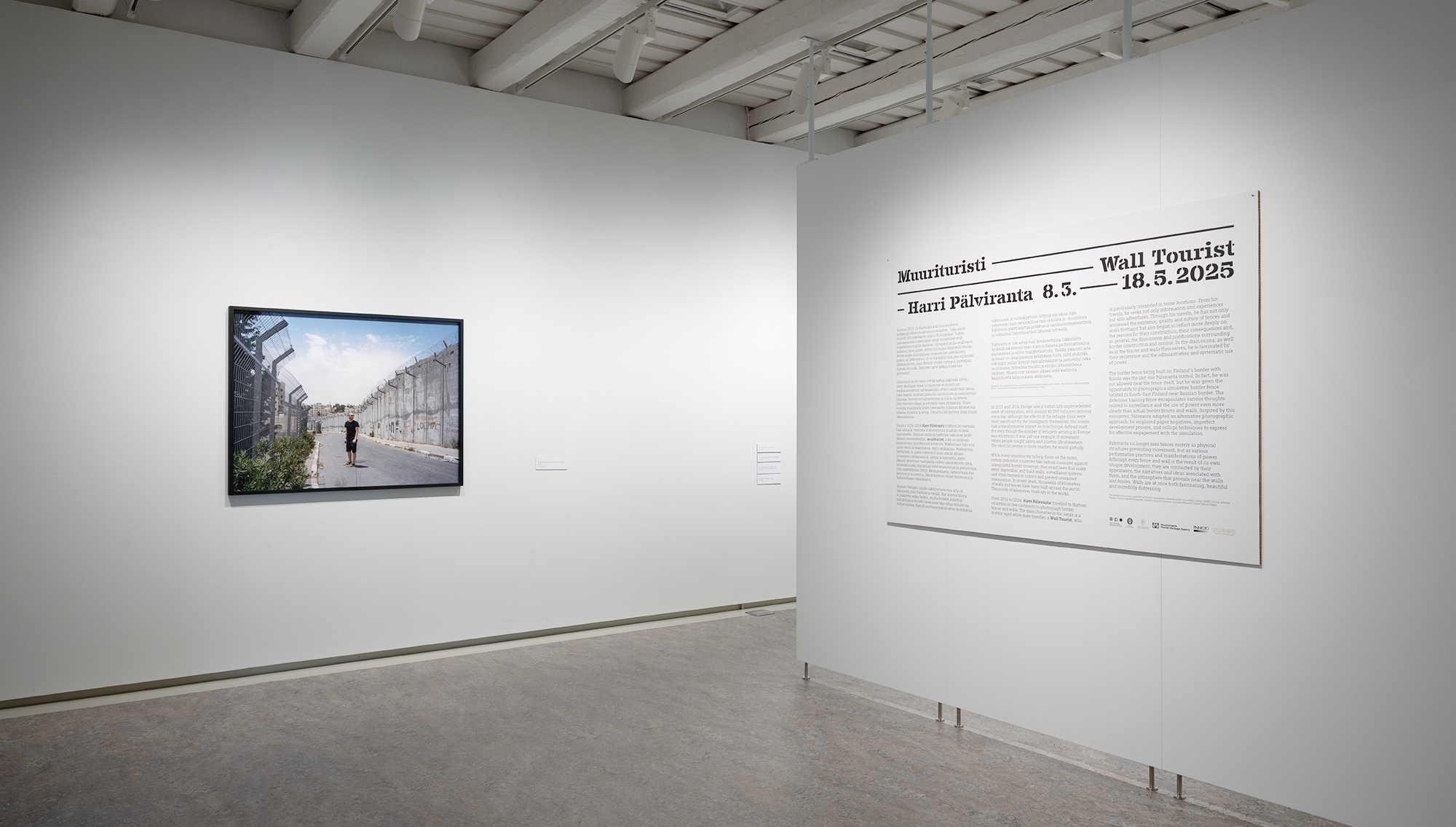
Lappeenranta Art Museum, Finland 2025
Harri Pälviranta
WALL TOURIST
2016–2025
In 2015 and 2016, Europe saw a historically unprecedented wave of immigration, with around 40,000 refugees arriving every day. Although the effects of the refugee crisis were most significant for the immigrants themselves, the events had a transformative impact on how Europe defined itself. But even though the number of refugees arriving in Europe was enormous, it was just one example of movement where people sought safety and a better life elsewhere. The need for people to move touches the world globally.
While many countries try to help those on the move, certain individual countries take radical measures against unregulated border crossings: they enact laws that make entry impossible, and build walls, surveillance systems and other barriers to control and prevent unwanted immigration. In recent years, thousands of kilometres of walls and fences have been built around the world. Thousands of kilometres more are in the works.
From 2016 to 2024, Harri Pälviranta travelled to thirteen countries on five continents to photograph border fences and walls. The main character in the series is a middle-aged white male traveller, a Wall Tourist, whois particularly interested in tense locations. From his travels, he seeks not only information and experiences but also adventures. Through his travels, he has not only witnessed the existence, quality and nature of fences and walls firsthand but also begun to reflect more deeply on the reasons for their construction, their consequences and, in general, the discussions and justifications surrounding border construction and control. In the discussions, as well as in the fences and walls themselves, he is fascinated by their recurrence and the administrative and systematic use of power.
The border fence being built on Finland’s border with Russia was the last one Pälviranta visited. In fact, he was not allowed near the fence itself, but he was given the opportunity to photograph a simulative border fence located in South-East Finland near Russian border. The defensive training fence encapsulates various thoughts related to surveillance and the use of power even more clearly than actual border fences and walls. Inspired by this encounter, Pälviranta adopted an alternative photographic approach: he employed paper negatives, imperfect development process, and collage techniques to express his affective engagement with the simulation.
Pälviranta no longer sees fences merely as physical structures preventing movement, but as various performative practices and manifestations of power. Although every fence and wall is the result of its own unique development, they are connected by their appearance, the narratives and ideas associated with them, and the atmosphere that prevails near the walls and fences. Walls are at once both fascinating, beautiful and incredibly distressing.
-------------
The exhibition has been supported by Finnfoto Association, Foundation for Journalistic Culture (JOKES), Finnish Heritage Agency, Patricia Seppälä Foundation, Finnish Cultural Foundation and Arts Promotion Centre Finland (Taike).







